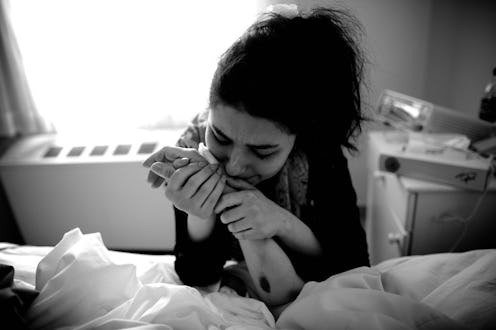News
5 Ways Hospice Care's Changing How We View Death

When you think of hospice facilities, you might not conjure up the most pleasant images. But that doesn't change the fact that they have become an extremely important part of our healthcare system. For those of us who aren’t familiar with it, hospice is a type of care for terminally or chronically ill patients who are nearing the end of their lives. Hospice and palliative care programs focus on comfort, rather than treatment or cure, and they offer emotional and spiritual support for loved ones. Hospices are relatively new; the number of programs in the United States has risen tremendously over the past few decades, from 1 in 1974 to 5,800 in 2013. Last year, a recorded 1.5 million individuals were cared for in hospice compared to 25,000 in 1982.
In my graduate school program, I studied grief counseling and volunteered regularly in a small Cambridge hospice home, where I learned what the classrooms couldn’t teach me. It was difficult work that taught me significant lessons and forever changed my life. I have witnessed how influential end of life care can be for our society, for the everyday Americans facing death. Here are five ways hospice and palliative care programs are changing lives.
1. They're Opening Up The Conversation About Death
Death is the only guarantee we have in this world, yet it’s the toughest subject to talk about — it’s taboo. But the silence is what ends up hurting our loved ones the most. A person nearing death deserves the chance to talk about everything, from what they are terrified of to what kind of memorial service they desire. Hospice environments pave the way for those chats, giving patients and their loved ones the space to talk about the uncomfortable stuff.
The United States is a young country with a growing culture, so we don’t have many deeply rooted traditions of death and dying. Hospice homes also allow us to create any kind of rituals we want — even if that means incorporating rites from other cultures or religions. These ceremonial acts are extremely important in the process of dying.
2. They Make Us Think Twice About Invasive Treatments
Unfortunately, many hospitals give dying patients treatments that can cause unnecessary pain and discomfort. Rather than placing them in facilities that manage pain in a tranquil setting, people are placed in ICUs where they suffer unwanted and expensive medical procedures. The more hospices we see, the more doctors who are trained in palliative care come forward and help us realize that there comes a time when cure is no longer possible and we should instead focus on relief of symptoms and stress.
This is not to say that everyone should resist traditional treatments and immediately welcome the dying process — every person is different. However, many of these ministrations are aggressive and they diminish the quality of life. Plus, nearly 9 out of every 10 physicians would refuse the very treatments they administer. Now patients are at least given the chance to choose.
3. They Provide Access To A More Diverse Group Of Professionals
Because having a terminal illness is such muddy water to wade through, it’s helpful to have seasoned professionals by your side who have visited the terrain many times before. In addition to preparing doctors and nurses for hospice care, the U.S. offers countless programs in fields such as family management, grief counseling, and interfaith chaplaincy. Students are required to participate in fieldwork, which gives them the opportunity to work with multiple patients who are nearing the end of their lives.
I had the privilege of studying with a professor who was an ordained minister and a death coach. Her job was to help people die peacefully as well as guide their loved ones through the process. She worked with people from all kinds of faiths and cultures; she helped her patients welcome death in a soothing way. Even if we don't choose to tap into the entire diverse network of workers, it is nice to know they are available to us.
4. They Give People The Chance To Say Beautiful Goodbyes
Hospitals are usually hectic, sterile places where machines are beeping loudly and unknown people enter the room at every turn. The hospice environment is not only meant to help people die with dignity; it gives the patient opportunities to say all their farewells to family and friends. Medical professionals and counselors do everything they can to make sure the space is set for anything the family needs, whether it’s reconciliation or joyful memory sharing.
5. They Help Us All Feel Less Afraid
Before the hospice we know today came into existence in the 1970s, there weren’t many learning materials that helped us make sense of the end of life. But as we’ve seen more facilities spring up in the U.S. we’ve also witnessed the release of numerous books, instructional texts, documentaries, and even podcasts on the subject. Patients and their loved ones have access to a number of publications that give them hope in the dying process.
Documentaries like PBS’ Being Mortal by Atul Gawande and essays like “Yellow Taxi” by Eve Joseph let us know we aren’t alone in watching someone we care about near the end of his/her life. These pieces also allow us to educate ourselves on what’s going on in the healthcare system. Most importantly, though, they remind us that we all will face death one day — and we don’t have to be so terrified of it.
Images: Getty